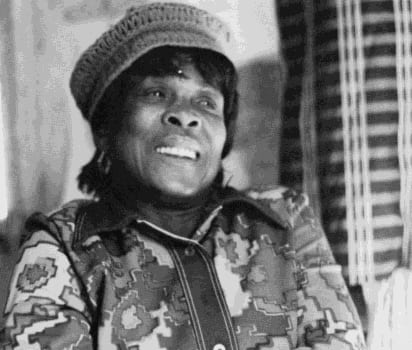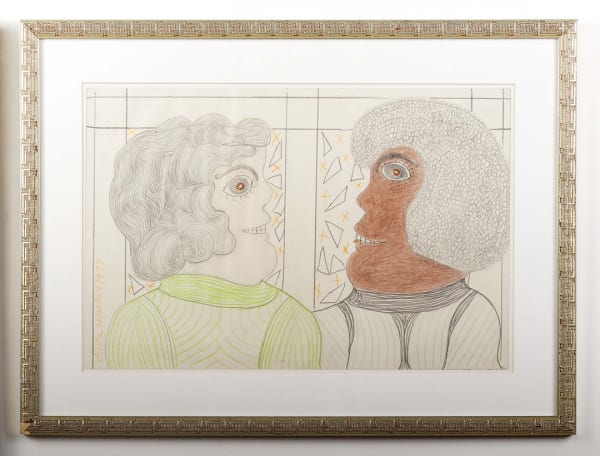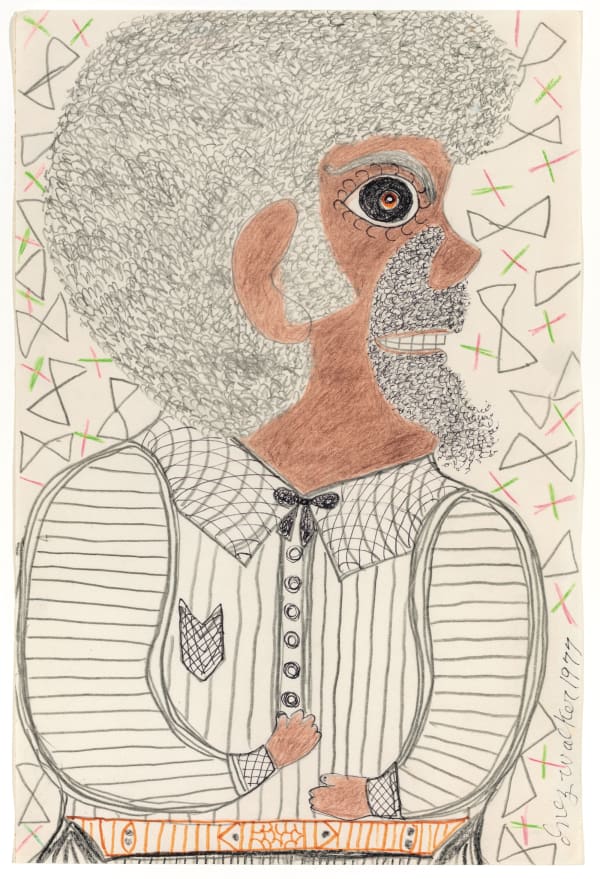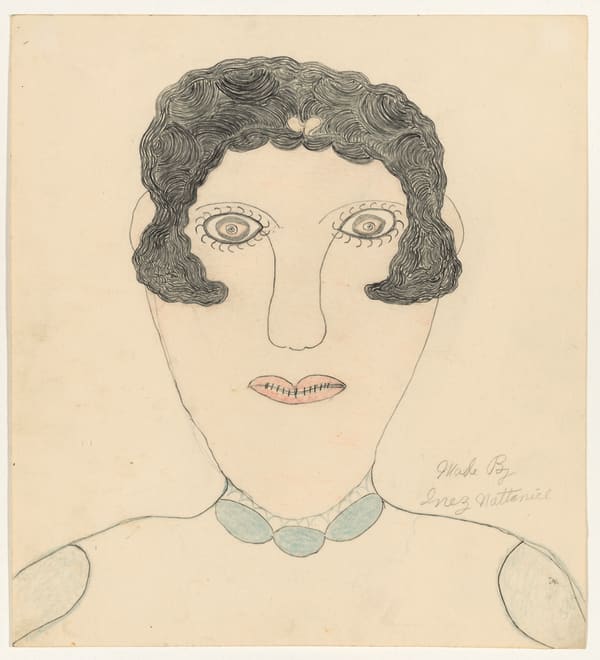Inez Nathaniel Walker American, 1911-1990
Born into poverty in Sumter, South Carolina, Inez Nathaniel Walker (née Stedman) was orphaned as a young child. At sixteen, she married and had four children. To escape the harsh world of farm labor, in the 1930s, she joined the Great Migration and moved to Philadelphia and then, in the 1940s, to New York state, where she lived in many different towns over the years, working menial jobs.
In 1971, Inez Nathaniel (Walker, after she remarried in 1975) began making art at the Bedford Hills Correctional Facility in Westchester County, New York, where she was incarcerated for two years for killing a man who had abused her. When a remedial English teacher in the penitentiary, Elizabeth Bayley, found a stack of nearly eighty unsigned drawings left in her classroom, she discovered they were made by her student Inez Nathaniel. Bayley asked if she could buy the drawings, encouraged her to continue drawing, and supplied Inez with paper and drawing supplies. By the time Walker was released from prison in 1972, she had become enormously prolific and had caught the attention of a local folk art dealer, Pat Parsons, who began to bring her better art supplies and organized her first exhibition that same year.
Walker’s early drawings were made on the back of prison newsletters, evaluation forms, and the like, using graphite, pens, and crayons; her later works are made with watercolor, ink, and felt-tip pens on high-quality paper. Her drawings are mostly portraits of women and self-portraits; her subjects’ heads, with detailed hair and sometimes hats, are always the most detailed part of her work, along with distinctively large eyes framed with curly lashes, which always face the viewer. Even if creating a true likeness eluded her, Walker was gifted at conveying a person’s essence.
After she remarried, Walker lived in New York’s Finger Lakes region and devoted herself to making art. Her work is in the collections of the American Folk Art Museum (New York), the Museum of International Folk Art (Santa Fe, New Mexico), the Smithsonian American Art Museum (Washington, D.C.), and the Collection de l’Art Brut (Lausanne, Switzerland).



